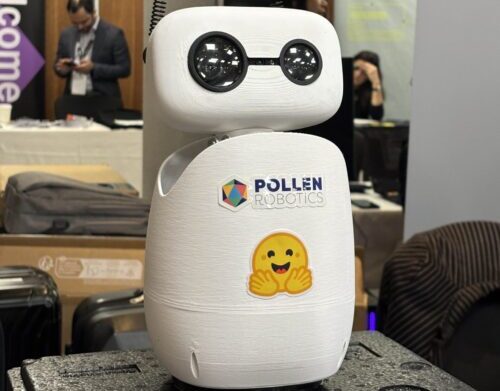
Hugging Face Launches Affordable Open Source Robots
Hugging Face has taken another step into the robotics world by unveiling two new open source humanoid robots — HopeJR and Reachy Mini. The announcement signals the company’s increasing commitment to building accessible robotics hardware powered by AI.
Affordable and Modular: A Vision for Open Robotics
The larger of the two, HopeJR, is a full-size humanoid robot featuring 66 actuated degrees of freedom. This means it can perform complex, independent movements such as walking and arm articulation. In contrast, Reachy Mini is a compact desktop unit designed to assist in testing conversational AI applications. It can move its head, talk, and listen — making it a handy tool for developers exploring AI-human interaction.
CEO and co-founder Clem Delangue confirmed to TechCrunch that the waitlist for both robots is open. He added that the first batch could begin shipping by the end of 2025. However, an exact delivery timeline remains uncertain.
Hugging Face estimates the price of HopeJR at around $3,000, while Reachy Mini will cost approximately $250 to $300, depending on tariffs. These competitive prices reflect the company’s goal to democratize robotics development.
Why Open Source Matters in Robotics
One of the most notable features of these robots is their open source architecture. “The important aspect is that these robots are open source,” said Delangue. He emphasized that this allows anyone to assemble, modify, and understand how the systems work.
According to Delangue, making robotics affordable and transparent is vital to prevent a future dominated by closed, black-box systems from major tech players. The company believes in a more inclusive robotics ecosystem, where innovation can come from anyone, not just the biggest firms.
Built on Acquired Expertise
This release is closely tied to Hugging Face’s recent acquisition of Pollen Robotics, a humanoid robotics startup, in April. The integration of Pollen’s team has given Hugging Face new hardware capabilities that made HopeJR and Reachy Mini possible.
Delangue credited Pollen Robotics for helping bring these bots to life. Their experience provided Hugging Face with the tools to develop hardware that complements its growing portfolio of AI tools and datasets.
Hugging Face’s Broader Robotics Push
Hugging Face began ramping up its focus on robotics in 2024 with the launch of LeRobot — a growing repository of AI models, tools, and datasets for building robotics systems. This platform supports developers in creating smarter machines using open standards.
In 2025, the company updated its SO-101 robotic arm, a 3D-printed and programmable device built in partnership with The Robot Studio. Additionally, through a collaboration with AI startup Yaak, Hugging Face expanded LeRobot’s training datasets to include new materials suited for self-driving machines.
With the launch of HopeJR and Reachy Mini, Hugging Face is now solidifying its presence in the physical world of robotics. These robots are not just tools — they are part of a broader vision for accessible, ethical, and open innovation.
The company continues to build an ecosystem that links hardware and AI in meaningful ways. It is clear that Hugging Face wants to play a central role in shaping the future of open robotics — one that avoids technological monopolies and invites collaboration.
